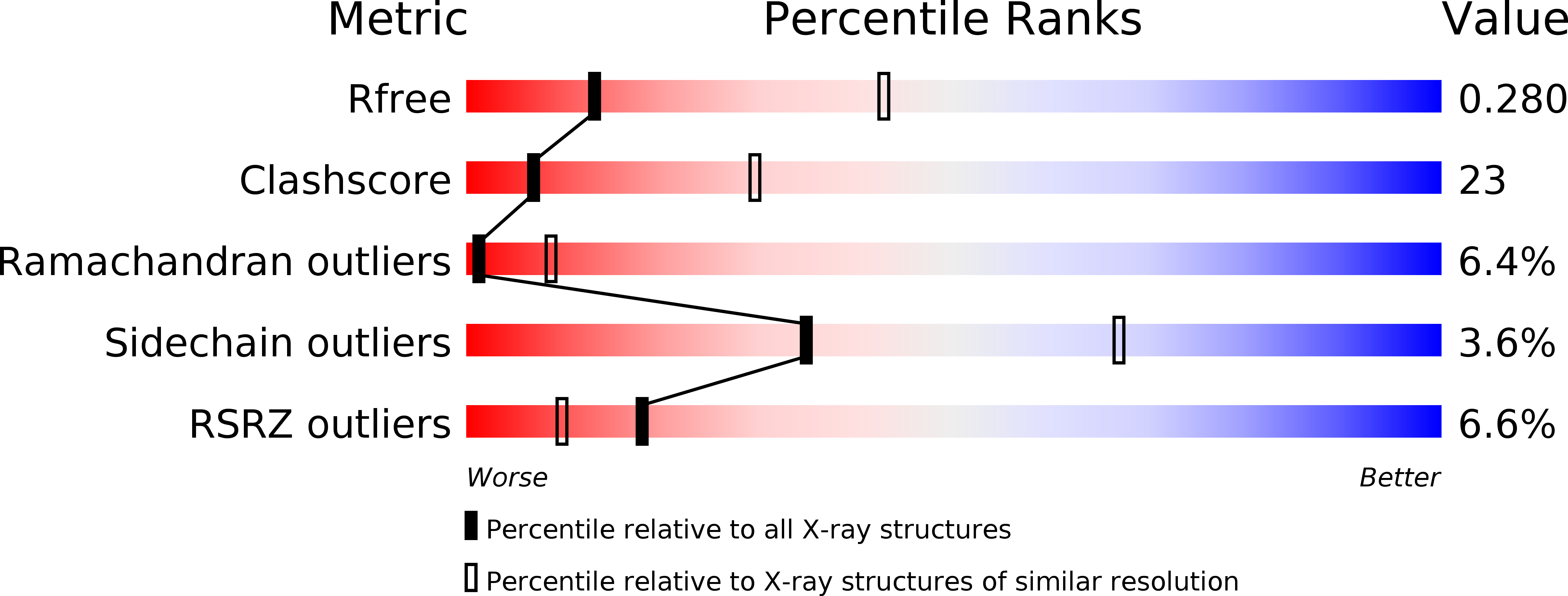
Deposition Date
2017-10-16
Release Date
2018-09-19
Last Version Date
2024-10-30
Entry Detail
PDB ID:
6BAY
Keywords:
Title:
Stigmatella aurantiaca bacterial phytochrome P1, PAS-GAF-PHY T289H mutant, room temperature structure
Biological Source:
Source Organism:
Stigmatella aurantiaca DW4/3-1 (Taxon ID: 378806)
Host Organism:
Method Details:
Experimental Method:
Resolution:
3.15 Å
R-Value Free:
0.28
R-Value Work:
0.22
R-Value Observed:
0.22
Space Group:
P 32 2 1


